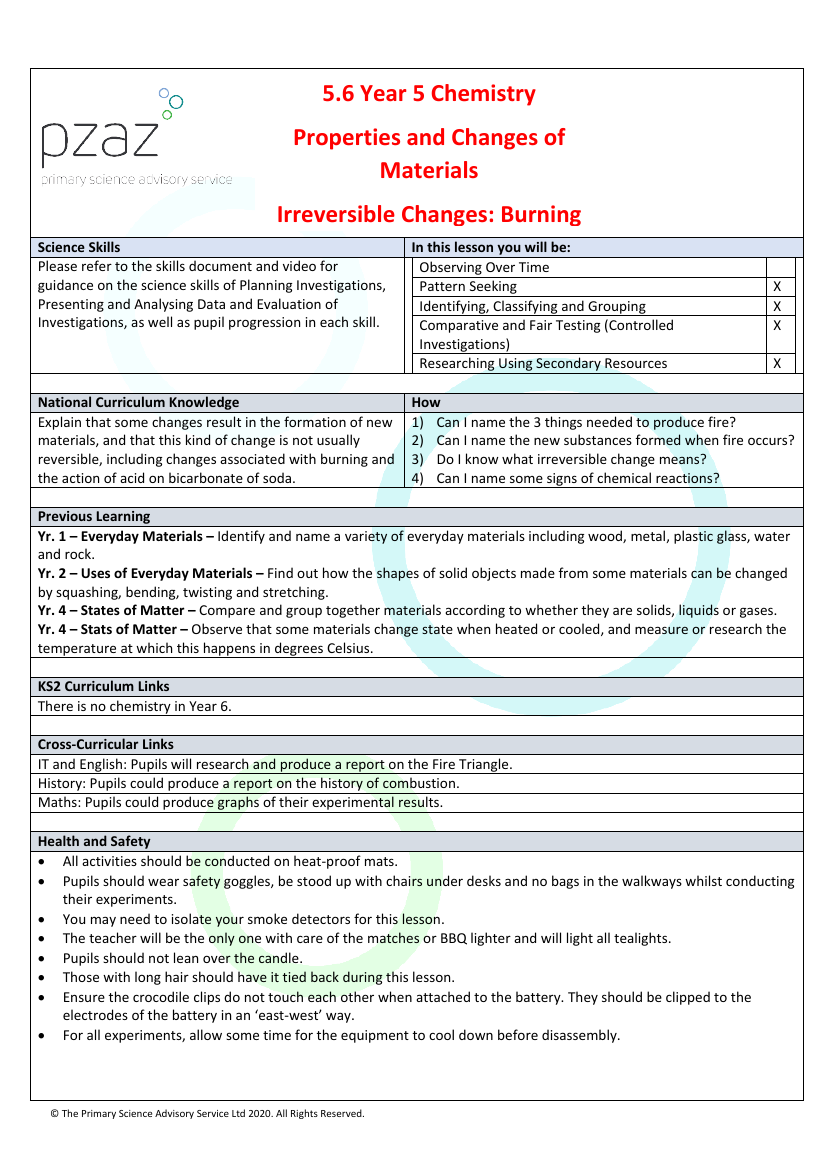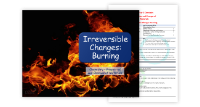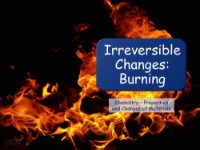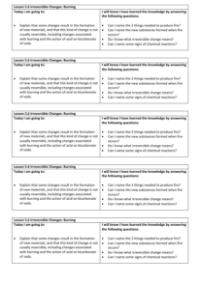Burning - Lesson Plan

Science Resource Description
The lesson plan from The Primary Science Advisory Service Ltd delves into the scientific understanding of burning, a topic tailored for Year 5 students studying the properties and changes of materials. It aims to elucidate that some changes, such as burning, lead to the creation of new materials and are typically irreversible. Students are expected to learn the three essential elements needed to produce fire, identify the new substances formed during combustion, comprehend the concept of irreversible change, and recognize signs of chemical reactions. The lesson builds on previous knowledge acquired from Year 1 to Year 4, covering everyday materials and their properties, including their states of matter and how they change when heated or cooled.
The lesson includes a variety of activities to engage students in hands-on learning. One such activity involves exploring the 'Fire Triangle' by creating a report that explains the three elements required for fire: oxygen, heat, and fuel. Another experiment demonstrates the necessity of oxygen for combustion by observing how long a tealight burns under different sized glasses. Students will also investigate how the mass of a candle changes as it burns, providing practical insight into the law of conservation of mass in chemical reactions. To deepen their understanding of chemical processes, they will classify substances and construct chemical equations for burning a candle. The lesson also includes an experiment on the combustion of iron wool, illustrating the gain in mass due to the formation of iron oxide. Safety is paramount throughout the lesson, with specific guidelines to ensure a secure learning environment. The plenary session wraps up the lesson, where students review their understanding of the fire triangle, the products of combustion, irreversible changes, and evidence of chemical reactions.







